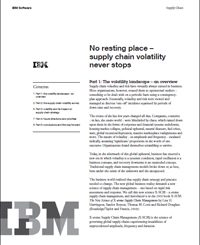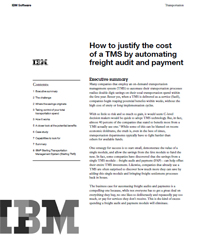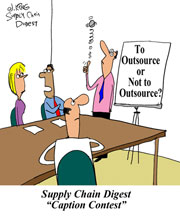 |
March 22, 2012 - Supply Chain Newsletter |
 |
This Week In SCDigest
FEATURED SPONSOR: IBM |
||
Supply Chain Volatility Never Stops - and What to Do about It
|
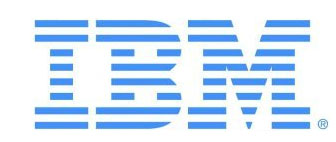 |
Justify the Cost of a TMS by Automating Freight Audit and Payment |
New Supply Chain Insight from IBM |
||

Trip Report: VCF Conference The conference is focused on the consumer goods to retail supply chain, mostly outside traditional consumer package goods, with strong participation in apparel/shoes (including department stores and apparel vendors), sporting goods, auto parts and lots more). Don't stop reading quite yet if you aren't in the consumer goods to retail supply chain, as many of the presentations were relevant across supply chain sectors, and high percentage of supply chains have a link to the consumer in the end.
VCF is the brainchild of founder and president Kim Zablocky, who started what was then called the Vencor Compliance Federation a decade or so ago. From my conversations, the early years to a certain extent served as a forum for vendors, especially in the apparel sector, to get together and complain about real or perceived grievances with chargebacks from retailers for various violations of requirements for labeling, EDI, delivery, and more. About halfway in, Zablocky got the very smart idea that the organization and its programs needed to be more about dialog and collaboration between vendors and retailers rather than complaints about chargeback programs. Hence the change to just "VCF" as the name, and the soon addition of a significant number of retail members in addition to the base of consumer goods manufacturers. I am pretty good at having side conversations with attendees in these kind of events, over adult beverages as appropriate, and from a few I had with both vendors and retailers comes the following observation, relative to retailer presence: the retailers that belong to VCF strongly tend to be those that are really interested in using compliance programs to improve total supply chain performance; those that are primarily interested in using compliance rules to generate revenue are not so likely to get involved. I have a lot more respect for the former (Stage Stores comes immediately to mind) than the latter. Finally, an essential component of the several annual VCF conferences are one-on-one meetings between vendors and retailers, often with the retailer's head of vendor relations or similar title. My conversations indicated that the subject of these meetings can range from just getting back on the same page to discussions as to whether some vendors with large chargebacks could possibly get some relief, but regardless these meetings are clearly a large part of the value for both sides of the value chain. OK, after all of that, here were some of the VCF presentation session highlights: I really enjoyed a presentation from Mike Rescigno of Rescigno Logistics Group (and a former Belk's store chain executive) on how all sorts of little things can rapidly cut the profits out of ecommerce fulfillment, whether you are a retailer or any business selling on-line. The bottom line messages were (1) that you simply have to sweat the details; and (2) that you must look at the cost of the fulfillment operations and the call center together, as decisions made in the fulfillment center can often significantly increase call center costs. The goal has to be to minimize the total cost per order. As just a few examples of areas that can lead to profit crushing costs, Rescigno noted that often too little attention is paid to a variety of packing and packaging errors, from using more expensive bubble wrap than is needed to gift wrapping multiple items without clearly identifying what package was for who. Rescigno said that shipment errors or damage in the 5 per thousand orders range was about average. He also noted that things that looked smart to begin with, such as re-using vendor boxes for customer shipments, can cost more than it's worth in the end from workers spending time to look for the right box, or shipping boxes that are too big for the order. He also said if a defective product is discovered, it is critical to get out in front of the issue, proactively calling customers and promising a replacement. If the customer has to call, they will usually either cancel the order or demand a discount. Good stuff. Bill Hardgrave of Auburn University offered his top 10 of things to consider in rolling out an item-level RFID program, as is something of a rage right now in apparel and other soft goods retail, with the potential to (finally) spread to other areas. Hargrave first noted that while the current roughly 6 cents per RFID "inlay" cost would never work for basic consumer packaged goods, there are many developments afoot working to "print" the circuitry nearly for free and then have metal in the can serve as the antenna. Among the best of Hardgrave's tips were that store level RFID projects have to start with inventory accuracy. "Nothing else matters if inventory accuracy in store is poor," Hargrave said. He noted that his research has shown that average inventory accuracy at retail stores is in the 50-60% range, with accuracy being defined as the percent of SKUs for which the perpetual inventory system exactly matches the count in stores. He said that it is extremely rare for a retailer to have 80% inventory accuracy under that definition. It is essential to use similar control stores for any RFID pilots, Hardgrave said, so that real improvements in performance specific to RFID can be measured. He also later told me that the idea of combining electronic article surveillance (EAS) with RFID in a single tag probably really doesn't make sense. "Just use the RFID tag for both," he said. Jeffrey Boudreau of Ryder offered some ideas for logistics improvement, and said that it is not at all uncommon for the combination of lean principles applied to distribution and labor management systems to improve DC productivity by an amazing 67%. Why aren't more companies doing it? That is the multi-million dollar question. They just don't believe it, I have to conclude. Chris Petersen from consultancy IMS noted that one major challenge with improving the perennial issues of out-of-stocks at retail is that the industry doesn't even have a common definition. He tends to favor one that defines in-stock as "the percent of active SKUs that have quantity on the shelf." I'll buy that. Petersen added that the OOS problem can really only be solved in a collaborative effort between manufacturers and retails that involves "joint metrics, processes, and accountability." I couldn't agree more. Richard Mikes of research firm Transport Capital Partners provided a wealth of data on the state of the transportation market. If you want to know why we are largely in a transportation capacity crunch, consider that the net class 8 trucks registered at the end of 2011 was down 2.1% from year before, while freight volumes rose 5.8%, according to the ATA. In the peak season for 2012 (largely Q3), Mikes expects truckload costs to be up 10-12%, with half of that being increase fuel surcharges. Finally, I had a lengthy conversation with someone involved in a new technology that involves aftermarket kits than can enable existing truck engines to use a blend of natural gas fuel and diesel. Though not ready to really go public with this yet, my source said a typical blend would be to use 60% nat gas and 40% diesel. Even after the kit (which involved replacing one of the two diesel tanks with a natural gas one), the truck can work solely on diesel as necessary. The company claims that they have already received verification from truck manufacturers that this will not void warranties, a huge breakthrough if true. It says a 3PL arm of the company has 25 of these trucks running right now, with 25 more set to go on-line shortly. More on this from us soon. May well be worth checking on this organization if you are a retailer or consumer goods manufacturer.
|
|
||||||||||||||||||||||||||||||||||
New Upcoming Videocast:
The End of Cheap Oil

Is Your Supply Chain Obsolete?
Conserve, Cooperate, Get Lean.
Featuring Chuck Taylor, Former Transportation Executive, Founder of Awake!, and Peak Oil Prophet; Greg Holder, CEO and Founder, Compliance Networks; and Kevin Harris, Director, Compliance Networks
New Upcoming Videocast:
Operations Rules for Driving
Business Value & Growth
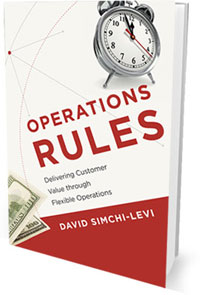
Part 2: Supply Chain Segmentation for Improved Profitability -
Strategies to Trim the Long Tail
Featuring Dr. David Simchi-Levi,
Professor of Engineering Systems, MIT
New On Demand Videocast:
The Real Deal in WMS Selection

Seven Smart Moves to Enhance Your Success in Getting the System and Results that are Right for You
Featuring John Pearce, Founding Partner & Principal, StoneCross Group; Steve Hopper, Founding Partner & Principal, StoneCross Group; and Joel Stachowski, Strategic Sales Executive, Infor
More Feedback this week from our First Thoughts piece saying that use of natural gas engines for both cars but especially trucking could substantially reduce the cost and variability of oil, gas and diesel (See Higher Oil and Diesel Prices - the Answer is Here.) That ncludes our Feedback of the Week from Chris Bratten of Bastain Software Solutions, who agrees natural gas will take off once we get a bit mopre infrastructure. Feedback of the Week: On Natural Gas Engines:
|
||
I think it is a no-brainer...for companies to invest in technology that yields a relatively quick ROI. That being said, the ROI itself should alleviate the need for the tax credits/subsidies. This is especially important if H.R.1380 doesn't have any provisions to increase revenue to offset the tax breaks/subsidies spent. With all the federal budget issues, supporting a revenue-negative act is not responsible unless coupled with improvements in other areas. I think the market is going to move this way much faster once the technology leaders in both supply (NG filling stations) and consumption (NG engine suppliers) lay more groundwork. As you stated in your article, this is already starting to happen. In my opinion, the best test market would be regional/local shipping companies; those that deliver in a limited radius. I think it would be easier and more cost effective to have the NG suppliers set up several local NG filling stations so that the NG trucks can stay within a safe range of places to 'tank up'. It would be much more difficult for large shipping companies to smartly invest in NG with the current state of the CNG distribution network. Plus, the lessons learned from a more open, small scale system (rather than say bus companies/internal shipping operations whose fleet may fill up at the same place/places all the time provided by the company or a partner) would help to further decrease the cost of a larger regional/national network. Though I'm sure this is already happening to some extent. As an engineer (and a gearhead) I'm excited to see the proliferation of new technology and I look forward to seeing NG filling stations as something more than an oddity. But I also think that the fiscal motivation for its implementation should be that of honest ROI and IRR coupled with a desire to be on the leading edge of technology - being willing to spend the money if necessary even if it means seeking financial help elsewhere. An interesting side note - on a lot of the oil wells in Northwest North Dakota, they are burning off the NG created by the drilling/fracking process because they just don't have the means/time/resources to add hardware to capture it! Talk about burning money...
Chris Bratten
|
||
More on Natural Gas Engines:
|
||
Difficult to disagree with you here. A few thoughts... The glut of natural gas has been made possible by fracking, and the environmental impact has some clouds hanging over this technology. Natural Gas may have a better carbon footprint (not sure how easy it is to deliver to the filling stations). It is unclear if the fuel tank provides the same range as diesel, or if the volatile nature of the fuel presents a higher fire risk in case of accident. Natural Gas is still consuming a non-renewable resource. So it seems like an excellent alternative to today's choices, but it is not a long term solution. Maybe that is where the wind farms come in. Nick Seiersen
|
||
I don't understand how we got unto the correlation between futures prices for crude oil and the price of gasoline at the pump. All of the oil companies have tied up crude oil for their use under long term contracts and barring a catastrophe the number of barrels of oil produced is pretty flat.
Glenn Scott
|
||
SUPPLY CHAIN TRIVIA ANSWER
Q: Caps Logistics, one of the early pioneers in supply chain network optimization software, resides where in the supply chain software landscape today?
A: Caps was acquired by Baan, an ERP software vendor that later kind of imploded, in 1998. In 2003, SSA acquired Baan, including Caps. In 2006, Infor acquired SSA, where the descendant of the original Caps solution remains today.
| © SupplyChainDigest™ 2003-2012. All Rights Reserved. SupplyChainDigest PO Box 714 Springboro, Ohio 45066 |
POWERED BY: XDIMENSION |
